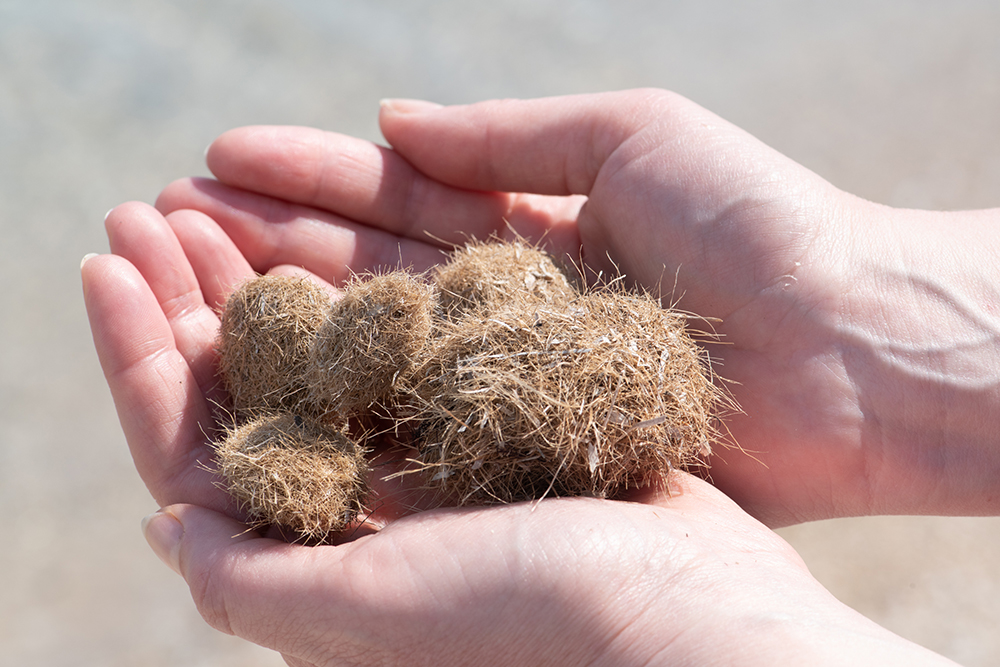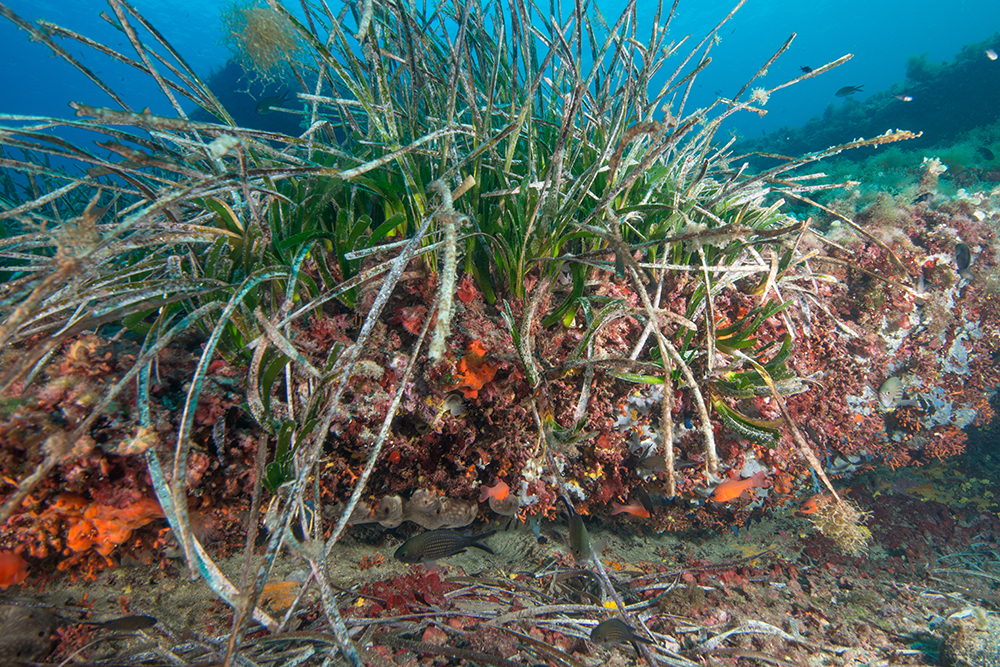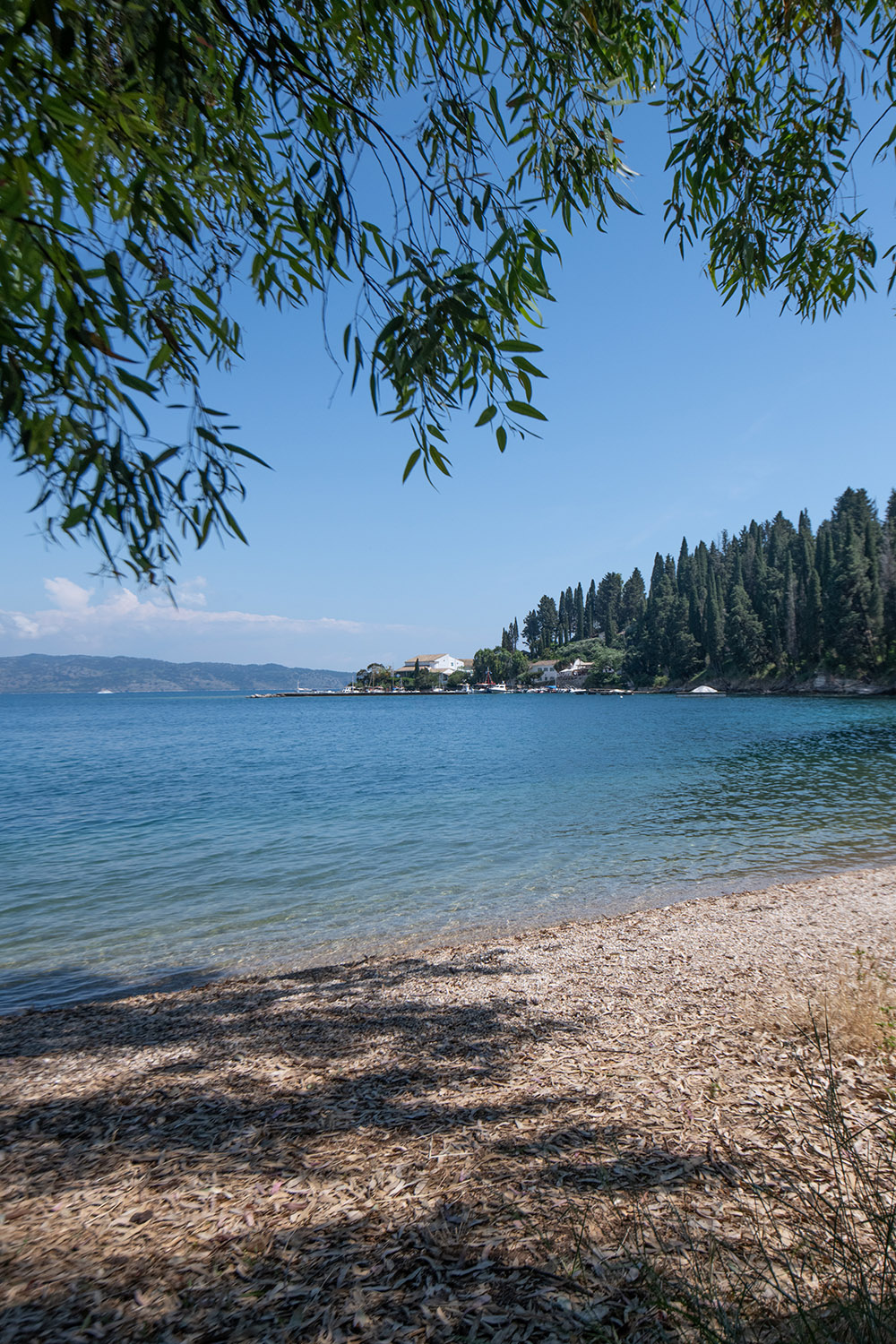
Looking a little like Chewbacca’s most intimate and prized organs of reproduction, sea grass balls are found on pretty much every beach in the Mediterranean, from Spain to Turkey. But what are they and how do they form?
As far as I know, and I’m happy to be corrected, these spherical masses of fibers only form from the remains of Neptune Grass (Posidonia oceanica), which is native to the Mediterranean. I don’t believe they form from other seagrass species, and I’d love to know why not.

P. oceanica is a fascinating plant, more closely related to terrestrial lilies than anything else and a long way from seaweed, which it is often considered to be by sun seekers, disappointed to find their beaches ‘littered’ with plant remains. P. oceanica forms huge and extremely long lived ‘meadows’ which are important for carbon capture and coastal protection, as well as for creating habitats for countless species that live within the undersea ‘fields’.
But back to these little ‘Chewie gonads’. They range from a few centimeters across to baseball-sized lumps of matter, and according to at least one report may have a future as an environmentally friendly form of insulation. Once harvested and pulverized, they are apparently fire and rot resistant.
In the past, seagrass remains were harvested and used by locals as animal bedding; its saltiness made the stuff slightly antiseptic. The material is now often removed from bathing beaches, which may have a damaging effect, as the dead leaves can protect beaches from erosion during storms.
The balls are created by wave action – masses of fiber from dead leaves become tangled as the surge ‘rolls’ the material together when it collects in sandy and rocky parts of the seafloor. Over time they wash ashore and are either intriguing finds or a nuisance depending upon your point of view – as are many of the truths we cling to.
According to Wikipedia they are called Egagrapoli, but I’ve always thought this was a wider term that includes things like owl pellets and other indigestible material regurgitated by animals. I prefer Wookie Bollocks myself.











Hello Richard,
Thanks for this helpful article! Yesterday I had a wonderful walk along a beach on the northeast coastline of the US – specifically in the state of Massachusetts – far, far from the Mediterranean. I was struck by two things on this walk at a beach I frequent – the water was a stunning sapphire blue and there were small, tightly packed “tumbleweed” like things all over the sand, at the shoreline, not far from the water. They looked exactly like your “Wookie Bollocks” ? pictured above. I don’t recall ever seeing them before. As I looked at the many photos I took of them, I got curious and googled around for any info, ultimately landing here. As I could not imagine how they formed so tightly from the land – even with the wind’s aid, the idea that they form in the water and within the motion of the waves makes more sense to me. Wish I could share some photos here.
Anyway, thanks so much!
Hello!!
I live in southern Nova Scotia, and this winter I found some Wookie Balls here too, on our beach. I am asking around, and so far, noone else has seen them here before – I know I never have. I assumed they were tangled spheres of sea grass created by tumbling waves. They are beautiful bits of nature.
I can report that sea balls have been spotted in southern Sweden as well. My family has a summer cottage on an island in the Baltic Sea. They wash up on the beaches here from time to time. My brother and sister-in-law have a basket full of them. Today he picked one up on the beach and gave it to me.
They are definitely here in Western Australia! So further from where you may think they are found!
We found these on the Spanish island of Mallorca. Loads of them. Thanks for the explanation and we loved your description! My husband said they must have a use, so insulation sounds a great idea. They drag them off the beaches here with tractors and sieve them from the sand. No idea what they do with them!
Loads of Wookiee balls in Corsica on the beach 😄
There were a few really tightly woven grass balls on the east coast of Tasmania several years ago. Some as big as 20cm in diameter.
I have found these on the beach in Oregon.